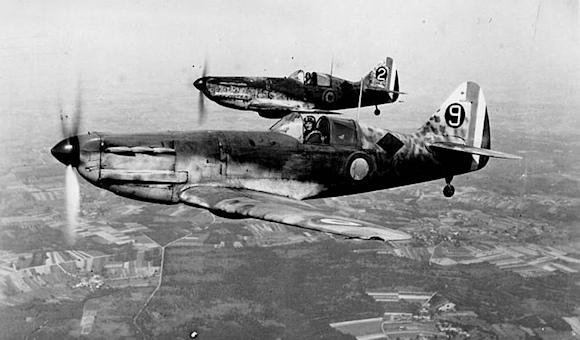Il Dewoitine D.520 it was - probably - the best fighter that the French Air Force managed to deploy in the Second World War.
Designed around 1936 by engineer Robert Castello, the first prototype took off for the first time on 2 October 1938 and reached a speed of 480 km/h. Subsequently, some modifications were made to the aircraft and among these was the upgrading of the engine. In fact, in subsequent tests the fighter was able to reach 530 km/h; the vehicle entered service at the beginning of 1940.
Before May 1940, the Armée de l'Air ordered the construction of over 2000 examples of D.520, while a hundred were commissioned by the Aéoronautique Navale. It is estimated that just over 400 vehicles were manufactured before France signed an armistice with Germany on June 22, 1940.
It should be remembered that - from the spring of 1941 - the Germans decided to continue the production of the D.520; a total of about 900 examples of the French vehicle were built.

The hunt Dewoitine D.520, according to many experts, was supposed to be an effective contemporary of the Messerschmitt Bf109 German and del Supermarine Spitfire British.
In this regard, Giorgio Bonacina writes: “The Dewoitine D.520 from its first appearance looked like a poor relation; also the other British fighter, the Hawker Hurricane, was undoubtedly superior to it - even though it was not faster - due to its greater weight, armament and eclecticism. However, the small but highly manoeuvrable D.520 was one of the best fighters in the world for its time”.1
Overall the French fighter proved to be less fast than the Messerschmitt Bf109, but in terms of maneuverability it proved to be superior. The D.520 turned out to be better than Fiat CR 42 Falcon of the Royal Air Force. In this regard, in the war against France (June 10-25, 1940) the Italian biplanes successfully bombed the French airports and destroyed a fair number of aircraft on the ground, but found themselves clearly in difficulty against the more "elastic" Dewoitine D.520.
Importantly, due to manufacturing delays, few were the D.520 usable to effectively counter the Luftwaffe. Nonetheless, the aircraft proved capable enough in dogfighting against German vehicles, but completely lacked the numbers needed to make a difference.

After the capitulation of France, the fighter was used by the Armée de l'Air de Vichy and other air forces; the main users of the vehicle were the Luftwaffe, the Regia Aeronautica (photo), the Royal Romanian Air Force and the Bulgarian Air Force. In addition, some examples operated within the Air Forces of Free France.
The hunt Dewoitine D.520 – in addition to the French and German theaters – it was used in North Africa, Bulgaria and on the Eastern front. The vehicle was definitively withdrawn from active service in the early XNUMXs.
Il D.520 (C.1) had a wingspan of 10,2 m, height 2,57 m and length 8,6 m. The empty weight was 2123 kg, while loaded 2677 kg.
Engine: 1 Hispano-Suiza 12Y-49, power 950 HP. The maximum speed was 560 km/h and the service ceiling was 10000m.
The armament consisted of a 404 mm HS.20 cannon and 4 x 1934 mm MAC 7,5 machine guns.
1 G. Bonacina, The Dewoitine D.520, in Illustrated History n°185, 1973, p.110
Photo: web












